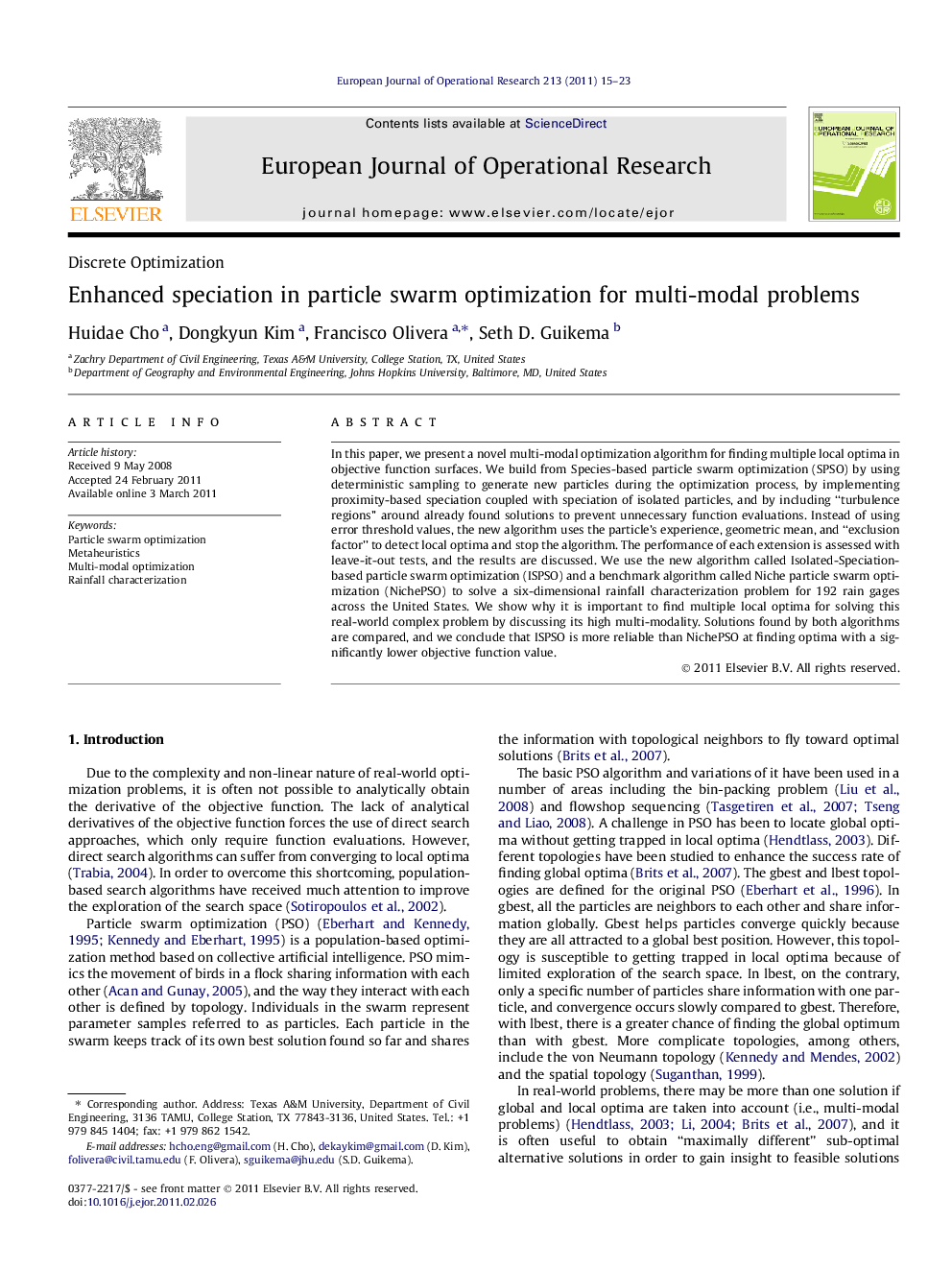| Article ID | Journal | Published Year | Pages | File Type |
|---|---|---|---|---|
| 480753 | European Journal of Operational Research | 2011 | 9 Pages |
In this paper, we present a novel multi-modal optimization algorithm for finding multiple local optima in objective function surfaces. We build from Species-based particle swarm optimization (SPSO) by using deterministic sampling to generate new particles during the optimization process, by implementing proximity-based speciation coupled with speciation of isolated particles, and by including “turbulence regions” around already found solutions to prevent unnecessary function evaluations. Instead of using error threshold values, the new algorithm uses the particle’s experience, geometric mean, and “exclusion factor” to detect local optima and stop the algorithm. The performance of each extension is assessed with leave-it-out tests, and the results are discussed. We use the new algorithm called Isolated-Speciation-based particle swarm optimization (ISPSO) and a benchmark algorithm called Niche particle swarm optimization (NichePSO) to solve a six-dimensional rainfall characterization problem for 192 rain gages across the United States. We show why it is important to find multiple local optima for solving this real-world complex problem by discussing its high multi-modality. Solutions found by both algorithms are compared, and we conclude that ISPSO is more reliable than NichePSO at finding optima with a significantly lower objective function value.
► The species-based PSO algorithm was extended for solving multi-modal problems. ► The new algorithm was called Isolated Speciation-based PSO. ► Performances of ISPSO and NichePSO were compared using a six-dimensional problem. ► ISPSO was more reliable at finding true minima than NichePSO.
